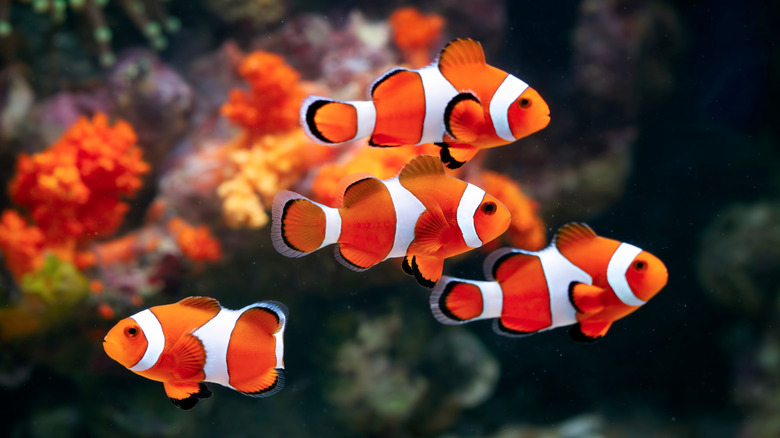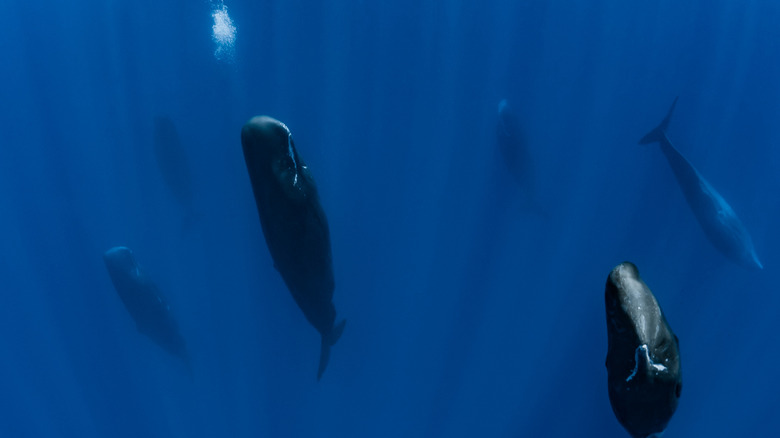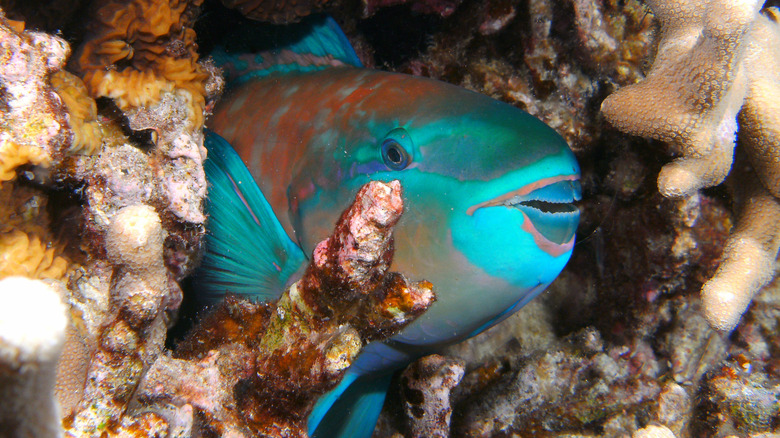Fish Don't Sleep Like Humans. Here's What They Do Instead
There are tens of thousands species of fish around the world, whether it's in an aquarium, river, lake, or ocean. Like all animals (and humans), every single one needs some form of rest for cognitive and overall health. So, although fish do sleep, how they sleep looks very different from other animals.
For starters, humans are pretty much unaware of their surroundings while they sleep, but that's not true for fish. They are able to rest while, for the most part, remaining aware enough to tell if there's a predator approaching. During this period, their metabolism significantly slows, they usually stop swimming, and their gills pump less often.
Some fish simply float out in the open water using their swim bladder (a characteristic common to all fish) to keep them at a stable depth so that they don't float up or sink while they sleep. Others may burrow in a safe spot between pieces of coral, plants, or rocks — or even in the mud. On the other hand, specific species like the parrotfish wrap themselves in a mucus cocoon to protect themselves from parasites and predators while they get the rest they need.
Sharks and sea mammals sleep differently
There are similarities between whales and sharks, such as their attraction to seamounts, but their sleep habits look as different from each other as they do from regular fish. Several species of sharks, including great whites, must swim in order to breathe, so they don't have the luxury of stopping. They may swim into a current or just slow down while they rest instead. Many other species, though, don't have to swim to breathe, such as the draughtsboard, Port Jackson, and wobbegong sharks. That's why you may see them lying on the ocean floor (possibly near seamounts), in shallow caves, or under reef rocks. Additionally, sharks rest with their eyes halfway or fully closed.
These sleep habits are slightly different from whales and dolphins. Yes, these are mammals, but how they sleep compared to fish is very interesting considering they live in the ocean, too. In fact, they don't breathe underwater like their marine counterparts. They have to breach the surface of the water to take in air through the blowholes on their heads. Because of that, they can't lie on the seafloor. Instead, only half of their brains shut down at a time, switching back and forth so that one half is always alert of their surroundings and taking them to the surface for air periodically.
During this half-on state, the sea mammals usually rest in place. Dolphins may go motionless near the surface, swim slowly, or rest on a shallow seabed and rise for air regularly — closing only one eye. Sperm whales, though, are known to rest vertically like logs near the surface so that they can rise for air.
Ocean creatures experience sleep stages and circadian rhythms
Scientists have been studying sleep in all creatures for a long time and continuously make new findings. In fact, based on research published in Nature in 2019, zebrafish are a tiny species that could unlock the secrets of how sleep evolved because they have similar hormone responses as humans to regular sleep, indicating that neural sleep signatures started developing more than 450 million years ago. The study found these fish, in particular, exhibited two stages of sleep that are sort of like the slow-wave and REM phases that humans exhibit.
Also, the researchers noticed that the fish followed a regular circadian rhythm (sleep–wake cycle) like other animals and humans, with most sleeping at night with the exception of species like eels and rays. These sleep cycles generally last between seven and 12 hours a day for aquarium fish, but more studies are needed on wild fish. In regard to other marine life, though, researchers think that some sharks have some sort of circadian rhythm based on the time of day, but most take short naps of 10 minutes or less. Sperm whales (and potentially others) typically sleep in short spurts as well, usually just 10 to 15 minutes.


